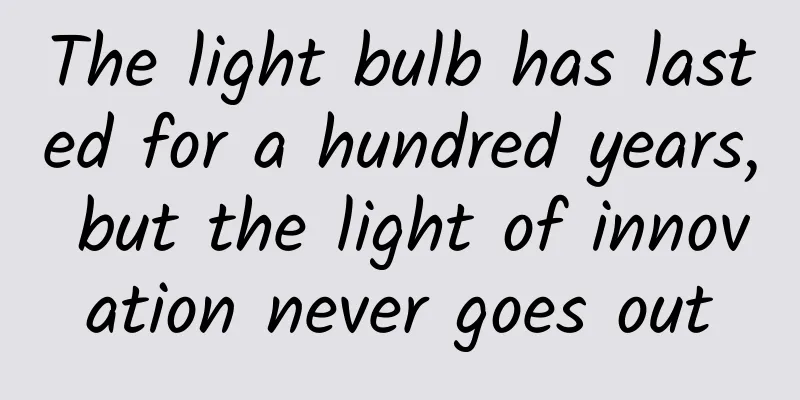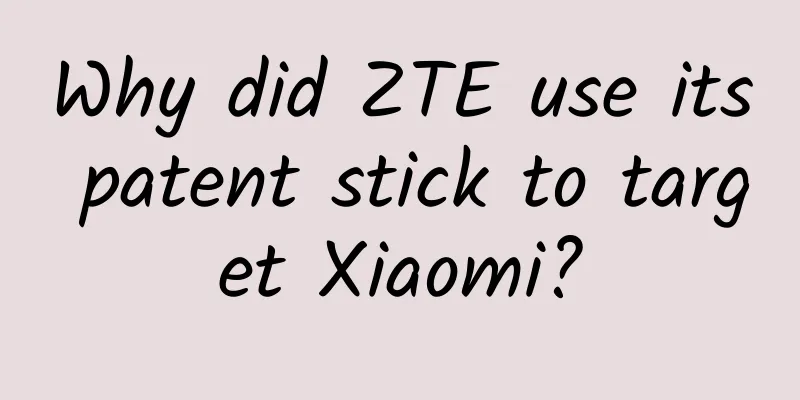The light bulb has lasted for a hundred years, but the light of innovation never goes out

|
The light bulb has lasted for a hundred years, but the light of innovation never goes out The cycle of night explains the inevitability of lighting, but conquering the night is destined to be a technological revolution with no end. The century-long evolution of the "light bulb" led by the light of innovation has witnessed the great improvement of China's "brightness". Light bulb lights up China (Image source: image.so.com) "Burning" tungsten filament changes China's "brightness" Although incandescent lamps have been phased out, they still live in the memory of the Chinese people. The pear-shaped image of incandescent lamps, which resembles the comfortable experience of sunlight, has warmed generations of Chinese people. Incandescent lamps are electric light sources made based on the principle of thermal radiation, so they emit light by heating the filament with electric current. Since the filament works in a red-hot state, it is called an incandescent lamp. However, the road to benefiting China from the "tungsten filament civilization" was not smooth. In February 1882, the British opened an electrical company in Shanghai and installed 15 incandescent lamps. In the following 40 years, all the incandescent lamps used in my country were foreign products. Hu Xiyuan, known as the "Father of Chinese Light Bulbs", was determined to make Chinese people's own light bulbs in his early years. On April 4, 1921, Hu Xiyuan trial-produced the first domestically produced long-filament incandescent lamp. In 1923, Hu Xiyuan founded the China Yapul Light Bulb Factory, which was China's first national light bulb factory. Domestic "Yapule" brand incandescent lamp (Photo source: blog.sina.com.cn) However, at the beginning of the founding of the People's Republic of China, my country's installed power generation capacity was very limited, so the road to the popularization of incandescent lamps was very long. "Electric lights and telephones, upstairs and downstairs" was people's vision of a better life in the future at that time. After the founding of the People's Republic of China, my country's modern electric lamp industry ushered in a spring of development. In September 1959, China Yapule Light Bulb Factory was renamed Shanghai Yaming Light Bulb Factory, and the "Ya" brand became a well-known national brand in my country. With the development of my country's electric power industry, incandescent lamps have gradually entered thousands of households. By the 1980s, the use of incandescent lamps had become very popular, but most households used 15-watt incandescent lamps. In 2006, the State Grid Corporation of China launched the "Electricity for Every Household" project to solve the problem of electricity access for the population without electricity. After decades of popularization, the "burning" tungsten filament has greatly increased the "brightness" of China, and the Chinese people have gained a new lifestyle from it. Saving tungsten filaments, halogen lamps make a shining debut In the minds of Chinese people, incandescent lamps are simply synonymous with electric light sources. However, inefficiency is the "weakness" of incandescent lamps. For most incandescent lamps, the energy utilization rate does not exceed 10%, and more than 90% of the electrical energy is wasted in the form of heat energy. It is reported that increasing the temperature of the tungsten filament can improve the luminous efficiency. However, when the temperature is higher than 2773K, a large amount of tungsten will sublimate, causing the glass shell to blacken and the light to dim. In order to solve this problem, domestic halogen lamps came into being. In 1961, Cai Zuquan, known as the "Father of Electric Light Sources in China", and his team successfully developed my country's first halogen lamp. Three years later, they successfully developed my country's first 1,000-watt halogen lamp. In 1965, Cai Zuquan and his team won the second and third prizes of the National Invention Award. Cai Zuquan and others tried to produce a new light source (Cai Zuquan is the first on the right) (Image source: mp.weixin.qq.com) In fact, halogen lamps, also known as halogen tungsten lamps, are an upgraded version of incandescent lamps. It turns out that by filling incandescent bulbs with halogen elements or halides, the blackening of the glass shell of incandescent lamps can be eliminated by using the halogen tungsten cycle principle. The brightness of halogen lamps can be increased by 1.5 times compared to incandescent lamps, and the life span can be extended by 2-3 times. Schematic diagram of tungsten halogen cycle (Image source: quora.com) As we know, headlights are the "eyes" of a car. Halogen lamps have a long history of being used as car headlights. Their main advantages are low price, fast opening speed, and good penetration. However, they also have disadvantages of high temperature, low brightness, and poor durability. Nowadays, halogen lamps are still used for headlights of economical models. At the same time, halogen lamps are also used in commercial and entertainment lighting as well as outdoor lighting. Car headlights (Image source: news.bitauto.com) Energy-saving lamps: sacrifice yourself to create a legend In the tide of low-carbon energy conservation, my country has formulated a timetable for the phase-out of incandescent lamps. On October 1, 2012, my country's 100-watt and above ordinary lighting incandescent lamps entered the substantive phase of withdrawal from the market, thus officially ringing the bell for the phase-out of incandescent lamps in my country. In the context of the time, energy-saving lamps became a substitute light source for ordinary incandescent lamps. In fact, energy-saving lamps are just a popular term, generally referring to single-ended fluorescent lamps and compact fluorescent lamps. The former has a separate lamp tube and ballast, while the latter has an integrated lamp tube and ballast. When talking about energy-saving lamps in China, we have to mention the story of Cai Zuquan. Cai Zuquan, known as a worker scientist, started his career as a glass manufacturing apprentice and then began to research electric light sources. In the early 1980s, Cai Zuquan attended a lighting technology conference held in Germany and brought back a small, inconspicuous glass object. Bronze statue of Mr. Cai Zuquan (Photo source: Fudan News and Culture Network) In fact, this was the first generation of energy-saving lamps abroad. After that, Cai Zuquan successively developed a series of domestic energy-saving fluorescent lamps. In 1985, the H-type energy-saving fluorescent lamp developed by Cai Zuquan won the third prize of the National Science and Technology Progress Award. In 1995, the double U-type energy-saving fluorescent lamp won the second prize of the Shanghai Science and Technology Progress Award. The structure of energy-saving lamps (Image source: energystar.gov) Energy-saving lamps and long-tube fluorescent lamps are both gas discharge lamps, which convert electrical energy into light energy through gas discharge. In the working state, the low-pressure mercury vapor arc in the lamp tube produces ultraviolet rays with a wavelength of 253.7 nanometers. Ultraviolet rays are invisible light, but they can excite the phosphor (tri-primary rare earth phosphor) on the tube wall to emit white visible light. As a substitute for incandescent lamps, energy-saving lamps have gone through a "painful" road to popularization. They would rather sacrifice themselves than change consumers' habits. This is the logic of energy-saving lamps. As for the folding and twisting of the lamp tube, it is to curl up to the same volume as the incandescent lamp to facilitate the replacement of the light bulb; at the same time, the length of the fluorescent lamp tube is guaranteed to maintain a certain energy efficiency. The innovation of energy-saving lamps is that they combine the high energy efficiency of fluorescent lamps with the convenience of incandescent lamps. The lamp base of energy-saving lamps is the same as that of ordinary incandescent lamps, so they can directly replace incandescent lamps. A feast of lights and fire, who will dye the world “Chinese red”? The 2008 Olympic opening ceremony held in the Bird’s Nest is unforgettable. It was simply a feast of lights and fire. A feast of lights and fire (Photo source: baijiahao.baidu.com) In order to highlight the theme of "Chinese red", wall washer lighting became the highlight. After repeated experiments, red metal halide lamps became the protagonist of wall washer lamps. Metal halide lamps are short for metal halide lamps. They are a new type of high-intensity gas discharge lamps filled with metal halide in the arc tube. They have the characteristics of good light color and high light efficiency. In the early 1970s, Fudan University and Nanjing Light Bulb Factory cooperated to produce the first metal halide lamp in my country. In the 1990s, my country introduced a number of metal halide lamp inner tube production lines from abroad. After more than 40 years of development, my country's metal halide lamp production technology has matured and has become a major metal halide lamp production country. So, why can metal halide lamps emit colorful light? Adding different metal halides can make metal halide lamps with different light colors to meet the requirements of light color in specific occasions. After lighting the metal halide lamp, the heat generated by the arc sublimates the metal halide attached to the tube wall, and the halide molecules decompose into metal atoms and halogen atoms under the high temperature of the arc. The metal atoms are excited in the arc and emit the characteristic spectrum of the metal, such as thallium iodide emitting green light, indium iodide emitting blue light, and lithium iodide emitting red light. For decades, metal halide has been the main player in sports stadium lighting, and also has important applications in location shooting, news photography, large-screen projection and effect lighting. At the same time, it can also be used for lighting in airports, stations, ports and urban lighting projects. LED lights shine brightly with “core” lighting The 21st century is the century of LED (light-emitting diode) lighting. LED is a semiconductor that can directly convert electrical energy into light energy, using the principle of electric field luminescence. my country's semiconductor lighting project was launched in 2003. In 2008, the demonstration application of LED lighting system integration technology in the Beijing Olympic Games made LED lighting an important force in supporting green lighting and the Olympic Games of science and technology. In 2010, the Shanghai World Expo provided a broad stage for the large-scale application of LED lighting. Various venues used about 1.05 billion LED chips, becoming the world's largest LED landscape. Energy conservation and environmental protection are the eternal themes of global sustainable development, and therefore are also important criteria for judging the quality of lighting sources. As the core component of LED lights, LED chips, with their technological breakthroughs, will give LED lighting excellent quality. Incandescent lamps are "extravagant" in terms of heat generation, which led to their delisting. Now, LED bulbs are cooler, which means less heat generation and higher energy efficiency, so it is a major technological advancement. Energy-saving lamps are only energy-saving compared to incandescent lamps, but they do not have the energy-saving advantage over LED lamps. In addition, energy-saving lamps also contain trace amounts of mercury, which can cause pollution when entering the environment. LED lamps do not contain mercury, ultraviolet rays, or infrared rays, and are praised for their environmental friendliness. Now LED lighting has become the highlight of green lighting in my country. Innovation is the soul of a nation. The story of a small light bulb lighting up China is a vivid example. The story of innovation in the light bulb is a testimony to the history of light bulbs changing lives in my country. References [1] China Illuminating Engineering Society, Beijing Illuminating Engineering Society. 200 Questions on Green Lighting, China Electric Power Press, 2008. [2] Su Genglin et al., Entering Green Lighting, China Electric Power Press, 2010. [3] National Semiconductor Lighting Engineering Research and Industry Alliance. Semiconductor Lighting China Dream, Chemical Industry Press, 2013 edition. [4] Jiang Yuan. “History of Light Source Development (II)”, Lighting and Illumination, No. 2, 2010. [5] Li Guangnan. Scientific Use of Light for Healthy Lighting, Blue Sky Publishing House, 2013. [6] Lin Min and Cui Yin, Southeast Business Daily. “Hu Xiyuan, the ‘Father of Chinese Light Bulbs’, Lights up the Light of Domestic Products”, China Ningbo Network, 2014-05-25. |
<<: Do you have these 5 smells at home? Strange smells at home are really dangerous!
>>: Why do you fry two dough sticks together? Is it because of love? "Singles" please avoid...
Recommend
3.15 Know More | Uncover the Truth Behind “Free WiFi”
The 3.15 Gala exposed that the "free WiFi&qu...
Are fruits and vegetables tastier now than they used to be? It’s not your illusion, science proves it
When you look at the rows of brightly colored fru...
Why do doctors in operating rooms wear green coats instead of white coats?
Yesterday, when I was surfing the Internet out of...
How much does it cost to join the Xining Attendance Mini Program? What is the price for joining Xining Attendance Mini Program?
What is the price to join the Xining Attendance M...
What are dead links? How to deal with dead links on the website?
For an SEO website optimization practitioner, it ...
My front teeth were broken 3 times while chewing duck neck. How did the teeth get destroyed?
China Science and Technology News Network, Februa...
Theory of Internet thinking subversion should be stopped in time
Recently, Lenovo Group Chairman and CEO Yang Yuan...
The sound of a cat purring remains a mystery
© Hella Health Leviathan Press: Patting the butto...
How to optimize the account when Baidu bidding promotion is not effective?
How to optimize the account when Baidu bidding pr...
AI surpasses humans again? This time, it's about protein modification
Artificial intelligence (AI) has once again surpa...
Even if the five major brands join forces, they cannot gain a foothold in the high-end market. Changan’s Zhu Huarong decided to join forces with Huawei to give it another try.
In the past few decades, Mercedes-Benz, BMW and A...
A new round of internal testing of WeChat’s exclusive input method: preventing eavesdropping and protecting privacy
[[434938]] As early as the beginning of this year...
Feihua Health Network is recruiting SEO, with a monthly salary of 20,000 to 35,000
You must have successful work experience and info...
Look, the first message sent by humans to the universe is the real broadcast era
Arecibo's first active signal sent into space...
How to master the skills of live streaming sales!
We all know that when live streaming sells goods ...









